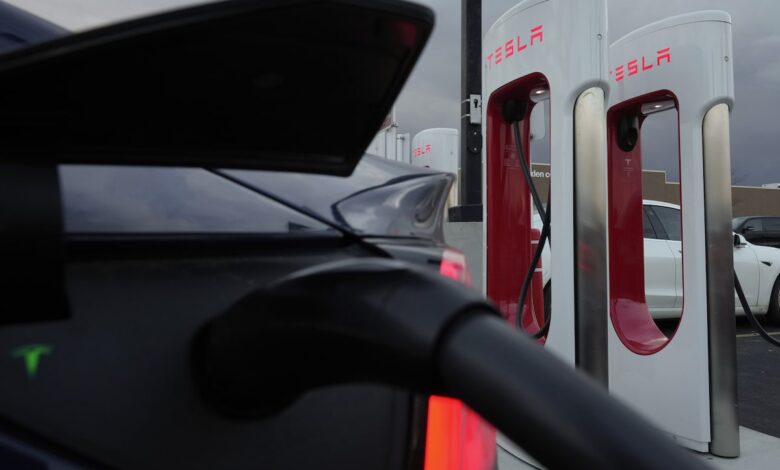Is electric vehicle coverage fair? It’s complicated

As electric vehicles increasingly become a political wedge issue in the United States and Canada, prompting a wave of click-bait misinformation on social media, it’s a good time to consider how the conventional news media as a whole – myself included – are covering electric cars.
Whether a story is too critical of EVs, or not critical enough, is a question that comes up often, and not just in online comment sections. It was the question at the heart of a recent opinion piece and panel discussion by Clean Energy Canada, an environmental think tank based at Simon Fraser University. (Disclosure: I participated in that panel discussion.)
Separately, Dan Guatto, director of business consulting and energy transition at consulting firm Ernst & Young LLP (EY Canada), recently said in an e-mail that, “we are not seeing as many positive stories, creating an imbalance and misunderstanding of the various benefits of being an EV owner.”
Some of my own stories on EVs have been quite positive, while many others – on the danger of ultrafast EVs, questionable EV marketing strategies, and issues of reliability and availability of public chargers – are somewhat negative. (Reducing 1,000-word stories down to either “positive” or “negative” coverage ignores all nuance, but let’s forget that for a moment.)
The real problem though, always, are what I’d call “bad” stories. Articles that miss or deliberately omit some important nuance or context or skew the facts are just plain bad, regardless of whether they’re positive or negative.
For example, many major media outlets covered the lineups and long waits at Tesla Supercharger stations in the Chicago area during a cold snap last winter. Certainly, there’s a legitimate story here: Public charging infrastructure failed to adequately cope with a spike in demand caused by extreme weather. That’s a problem that deserves attention now, before EV adoption becomes more widespread. The bad stories focused almost solely on the misery of stranded EV drivers. The good stories, while not ignoring their frustration, added considerably more context. One from The New York Times, for instance, explained that improved infrastructure has already helped to mitigate the charging problem in other cold-weather countries. It also said that carmakers are introducing technology to improve EV performance in cold weather.
Similarly, much of the media coverage of a Consumer Reports reliability survey last year – which prompted headlines that EVs are less reliable than gas cars – missed the nuance of the survey’s findings. Based on the company’s data, the reliability gap is temporary and likely to close as EV technology matures, an expert from Consumer Reports told me, citing trends from the raw data from previous surveys.
Fundamentally, this is a question of fairness, which is a question I struggle with on a daily basis while writing about EVs.
Fairness doesn’t mean writing an equal number of positive and negative stories. Nor is covering EVs and gas-burning cars akin to covering two opposing political parties. These two technologies are not equals.
Fossil-fuel-powered vehicles, those big metal boxes nearly all Canadians rely on in some form or another, are major contributors to the warming of our entire planet. We’ve known that for decades. And yet that rather important fact doesn’t even get mentioned in most car reviews, including, I must admit, many of my own.
Meanwhile, EVs are an imperfect but important part of the solution to the climate crisis. For more than a decade, study after study after scientific study shows battery-electric vehicles, while far from a silver-bullet solution, produce far less climate-change-causing pollution over the entire lifecycle (mining, production, use and recycling) than comparable fossil-fuelled vehicles.
Some readers may take issue with the sheer volume of stories about EVs these days, given that the vast majority of people still drive gas-burners. To look at just The Globe’s coverage over the past month, about half of the stories discuss electrified vehicles. The coverage is disproportionate to EVs’ market share, that’s true, but it’s actually appropriate given the fact a Globe survey last year found 48 per cent of readers were considering purchasing an electric vehicle.
People understandably have questions about EVs. This is new technology, requiring new infrastructure and supply chains, disrupting a trillion-dollar industry. EVs require drivers to discard century-old habits.
Upheaval on such a massive scale means countless hurdles, setbacks, concerns and problems. Readers should therefore brace for more critical EV coverage. Good stories, even if they’re “negative,” can help by informing readers or shining a light on flaws so that they might be fixed. Bad stories, however, are only ever bad. And separating the good stories from the bad and the downright misleading is important, whether we’re talking about EVs or elections or any other topic that stands to change our world.



